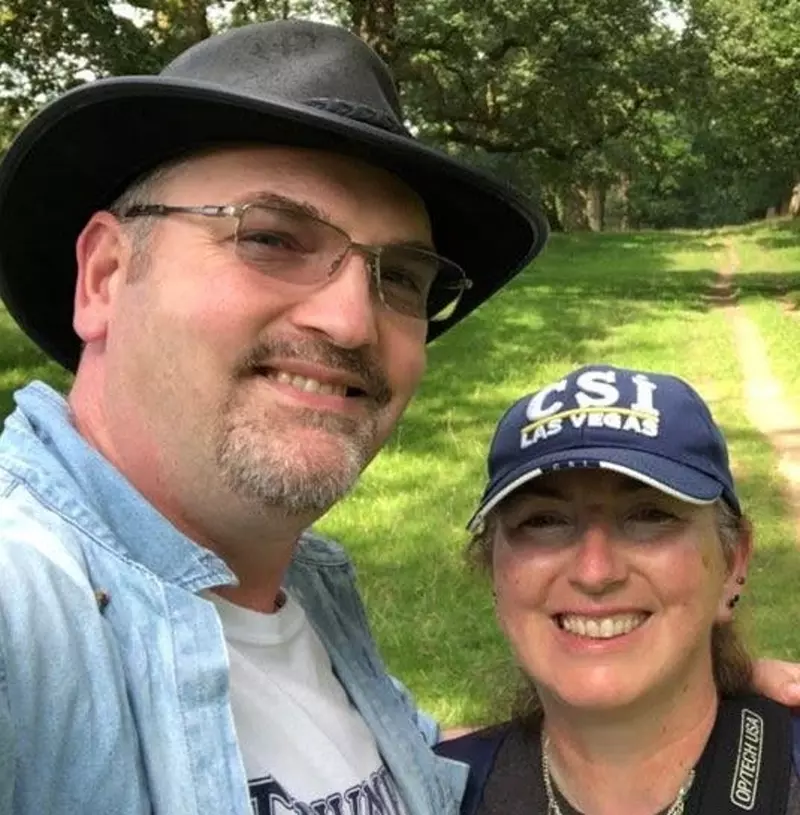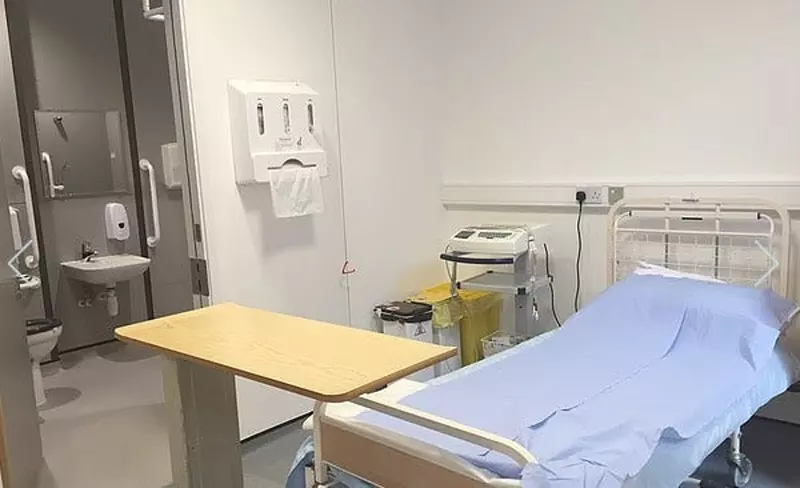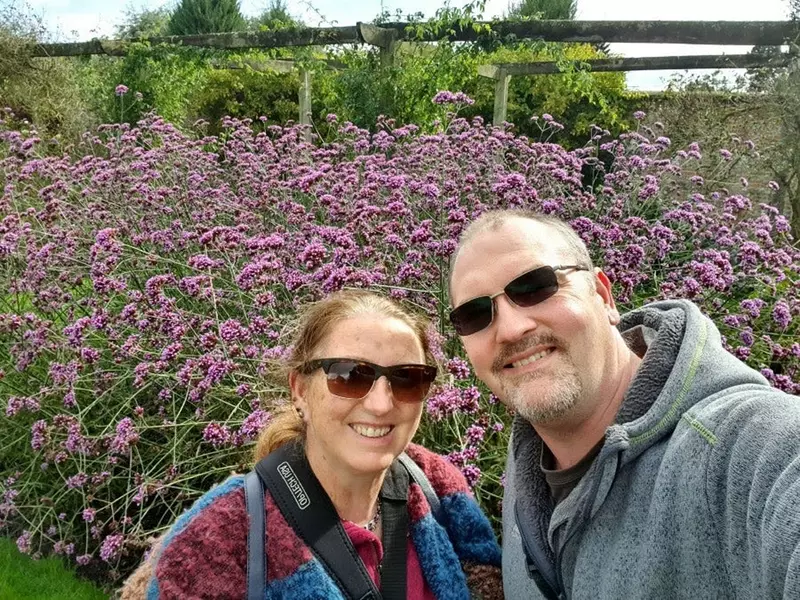What’s it like to take an experimental drug for Parkinson’s?
Fiona shares her experience of taking part in a study of a new experimental treatment, involving overnight stays and various assessments, including lumbar punctures. The next phase of the trial is now on the horizon.
The end of 2019 saw the start of the latest phase of research looking to investigate DNL151, a new type of drug called a LRRK2 inhibitor. The drug works by targeting a key protein called LRRK2 that is hyperactive in Parkinson’s. Reducing the activity of this protein has the potential to slow the progression of the condition, something no current treatment can do.
The phase 1b study was the first time that the treatment was tested in people with Parkinson’s and focused on assessing the safety and tolerability of DNL151. By the time this phase started, the drug had already been tested in a small number of volunteers without Parkinson’s and was shown to be safe in these individuals.
As well as testing the safety and side effects of the drug, this phase of the study also aimed to investigate how the drug is being absorbed, distributed, processed, and removed by the body at high and low doses.
We met with Fiona, who was the first participant in this trial, to find out what it involved and to hear her reflections on the experience.
Fiona was diagnosed in 2013 with early onset Parkinson’s, she was 47 at the time. Like many, she knew something was wrong in the year leading up to her diagnosis.
In the second half of 2019, Fiona decided to take part in her first drug trial: the phase 1b study of DNL151.

We asked her a few questions to find out more.
How did you hear about this opportunity to take part in research?
I attended the Parkinson’s UK Research Roadshow event in Kendal back in June 2019 and heard about the research there.
Why did you decide to take part?
I was inspired by the GDNF participants who went through such invasive surgery, including Tom Isaacs who went through so much and continued to be upbeat and positive throughout. I thought if he can do that, then I can do this.
I didn’t do it for me. By the time it goes through clinical trials, and hopefully approval, this will take a significant amount of time. I took part to help others with Parkinson’s.
What did the research trial involve?
I live in Lancaster and had to travel an hour and a half to the MAC Clinical Research site in Manchester.
There was an initial assessment to see if I was physically and mentally suitable for the trial. This lasted for 4 hours! It involved a range of assessments such as the usual neurological tests including the tap test, finger to nose test and walking up and down. I also had to undergo an assessment to look at my mental health. This was to check I was mentally capable to proceed with the study. Blood tests, urine samples and a breathing test were also involved. It was the breathing test that was the worst as you had to blow into a gadget and exhale for what felt like an age! This had to be repeated multiple times and was quite arduous.
After these initial assessments, I was told I was eligible to take part in the double-blind placebo controlled trial. This meant the researchers and I were unaware as to whether I was receiving the placebo (dummy drug), low dose or high dose of the treatment that was being investigated.

The initial part of the trial involved a 5-day (4-night) stay, Monday to Friday, at the study site. I had no visitors during this time, but my husband was put up in a Travelodge on the Thursday night to be there to collect me on Friday at dinner time. The Thursday was our 11th wedding anniversary.
The first longer stay was required so I could be closely monitored after receiving the drug for the first time. This was to ensure there were no safety concerns. During this stay, there were constant ECGs (electrocardiograms to monitor the heart), blood pressure readings and blood tests. As well as this, I had to have a lumbar puncture, which is a procedure to collect cerebrospinal fluid to see how much of the drug was crossing the blood brain barrier.
After leaving the study site and returning home the study continued. In total it involved me taking 4 capsules a day of the drug, or it could have been the placebo, for 28 days alongside my usual medication. I had to go back to the study site each week to have tests. This was quite stressful as I had to take the drug at 9.40am and then make sure I was at the study site within an hour of taking the medication. This didn’t help my anxiety that comes with my Parkinson’s, as I was always worried there were going to be delays on the trains, but only once was my train late. And I would like to point out that all travel expenses were covered and I could call a taxi if I needed to.
At the end of the trial, I had to stay over again at the study site for 4 days and 3 nights. During this time I completed the same series of tests that were done at the beginning including another lumbar puncture. This was to assess if anything had changed before and after taking the drug.
You mentioned a lumbar puncture, what does this involve?
It’s done under local anaesthetic and lasts for about 25 minutes. I felt a weird sensation in the lower back, but it didn’t hurt. I would say it’s like taking rubber from a rubber tree. A needle goes into the spine and liquid drips into a collector until 4 collectors are full. Afterwards, I had to take it easy and lie down, but overall the recovery was quick.
All of the doctors and nurses, including the anaesthetist involved, couldn’t have been kinder. They made the process easier, as they were so friendly and chatty.
How did you feel about the fact you may be on the placebo?
I knew this was a possibility but it didn’t stop me, it was out of my hands. Research studies have to have people receiving the placebo. They are as vital as those on the treatment. Without them, it would not be possible to accurately measure the potential benefits from the treatment being investigated.
As part of the trial, you had to be off your medication at the initial and final research visits. What was it like to be off your medication?
I was off my medication from the night before both assessments. They kindly did off medication assessments early. It lasted 40 mins. They then gave me my medication and an hour and a half later did the same assessments. This was to check if my medication made a difference, and yes they definitely do. It was interesting for me to see.
What did you do when you stayed over at the research site?
All was very quiet but I had a chance to read, write a diary of my experience and watch TV to pass the time. The food was also nice!
I got the chance to do some educational talks to the staff to help raise awareness of Parkinson’s and the needs of those living with the condition. This was essential as a lot of the staff said that they hadn’t met someone with Parkinson’s for a long time or had no experience with early-onset Parkinson’s.
What were the main challenges?
Taking part in this study was not easy, but I have no regrets. My partner Andy is so supportive. He says: "I am very proud of Fiona and I still am".

I have never liked injections and this trial involved a lot of needles! I also don’t like the attention. It was all about me. It felt very awkward.
Being the first participant in the trial, I was the only one on the ward. In the next ward, there was a group of guys on another trial, but all they did was sleep! I was also on my own as my husband couldn’t be with me the whole time. But I must say, the staff were great company and couldn’t do enough for me.
What was the best thing about taking part?
It gives hope. I feel like I have done something to help others. I am proud as usually people intend to do something but don’t get around to it, but I did.
What other things do you do to help manage your Parkinson’s?
I helped set up a fresher’s young onset group about 3 years ago now. I am also running self management courses through this group for people with early-onset Alzheimer’s, dementia or Parkinson’s. It offers a chance for people to get together and share their experiences and stories. We cover different topics such as nutrition, dignity in dying, getting help and support for carers. A lot of positivity has resulted from this group.
Many thanks to Fiona for sharing her experience with us.
Results and next steps
The good news is the initial results from this phase of the trial look promising and warrant further investigation of DNL151 through a larger phase 2 study.
Dr Penny Foulds, Executive Healthcare Manager at MAC Clinical Research, says:
"We are really pleased that the results from our phase 1b study showed that the new drug achieved the targeted level of LRRK2 inhibition. This was at doses that were safe and well tolerated in people living with Parkinson’s. There will be further clinical testing through a phase 2 study, which should hopefully start later this year. We would urge anyone who is interested in taking part to get in touch with us at MAC".
Fiona intends to sign up to take part in the phase 2 study to further explore the potential of this treatment for people with Parkinson’s.
The research study Fiona took part in was funded by Denali Therapeutics and was delivered by MAC Clinical Research. This post has been produced by Parkinson’s UK for information only and should not be taken as an endorsement or advice to join the study. Anyone considering taking part in research should read the full study information carefully and discuss this with their loved ones and health professionals.
Find opportunities to take part in research
By taking part in research studies, you can help accelerate breakthroughs.

